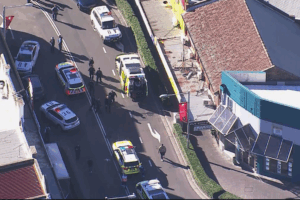Key Points
- It seems likely that South Korea has formed a task force for U.S. trade negotiations amid global tariff tensions.
- The task force, led by Trade Minister Yeo Han-koo, aims to reduce U.S. tariffs on South Korean goods and address trade barriers.
- The evidence leans toward this being a response to recent U.S. tariff hikes, with a deadline for negotiations by July 8, 2025.
Background
South Korea has taken steps to strengthen its trade relations with the U.S., especially as global tariff tensions rise. This task force is part of a broader effort to protect key industries like automobiles, steel, and semiconductors from U.S. tariffs.
Task Force Details
The task force, launched on June 16, 2025, includes officials from trade, manufacturing, energy, and investment. It is headed by Trade Minister Yeo Han-koo, with working-level leadership by Park Jung-sung, Deputy Minister for International Trade and Investment. The team is expanding to cover more areas and elevate its representatives to senior levels.
Objectives
The main goal is to negotiate a package deal by July 8, 2025, to reduce U.S. duties on South Korean goods and resolve issues like trade surpluses and import bans. It also aims to boost technological collaboration in AI and digital industries, enhancing South Korea’s global competitiveness.
Incident Overview
The formation of the task force was announced by South Korea’s Industry Ministry, highlighting its urgency in response to recent U.S. tariff policies. The task force is part of a broader effort to navigate the complex global trade landscape, particularly in light of the U.S. imposing 25% reciprocal tariffs in early April 2025, affecting South Korean exports significantly.
Task Force Composition and Leadership
The task force is headed by Trade Minister Yeo Han-koo, with the working-level delegation led by Park Jung-sung, Deputy Minister for International Trade and Investment. It comprises industry ministry officials overseeing trade, manufacturing, energy, and investment, ensuring a coordinated approach across government sectors. Recently, the trade ministry has expanded the existing task force, elevating chief working-level representatives from director to first-class senior level, indicating a higher level of engagement and commitment.
Objectives and Scope
The primary objective is to craft a comprehensive package deal for negotiations with the U.S., aiming for a significant reduction in U.S. duties on South Korean goods. This is crucial as South Korea seeks to address challenges posed by U.S. tariff policies, including issues like South Korea’s trade surplus, import bans on American beef (cattle aged 30 months or older), and restrictions on high-precision map data transfer. The task force aims to create a framework for bilateral cooperation before the July 8, 2025, deadline, which marks the end of the 90-day suspension of U.S. “reciprocal” tariffs.
Beyond tariff negotiations, the task force is tasked with expanding technological collaboration in areas like AI and digital industries. This aligns with South Korea’s goal to boost the global competitiveness of its industries, such as automobiles, steel, and semiconductors, and to foster new economic growth engines. The overall aim is to achieve a pragmatic and national interest-oriented outcome in trade talks with the U.S., ensuring the protection of key export sectors while addressing mutual economic concerns.
Context and Timeline
This initiative comes at a critical time, with global tariff tensions escalating and South Korea needing to compile an extra budget to boost its economy, as mentioned by presidential frontrunner Lee Jae-myung. The task force’s formation reflects South Korea’s proactive approach to navigating these tensions, especially given the competitive global landscape. The deadline of July 8, 2025, adds urgency, pushing for swift and actionable measures in the negotiations.
Broader Implications
The task force’s efforts are not only about immediate tariff reductions but also about long-term economic strategy. By resolving trade barriers and expanding technological collaboration, South Korea aims to enhance its position in global markets, particularly in high-tech sectors. This move is seen as a response to the domestic economic slowdown, with determination to fight recession through active engagement in international trade talks.
Summary Table: Key Task Force Details
| Category | Details |
|---|---|
| Launch Date | June 16, 2025 |
| Leadership | Headed by Trade Minister Yeo Han-koo, working-level led by Park Jung-sung |
| Composition | Industry ministry officials: trade, manufacturing, energy, investment |
| Key Objectives | Reduce U.S. duties, resolve trade barriers, expand AI/digital collaboration |
| Deadline | July 8, 2025 (end of 90-day U.S. tariff suspension) |
| Focus Industries | Automobiles, steel, semiconductors |
| Additional Goals | Boost global competitiveness, foster new economic growth engines |
This table encapsulates the core elements, providing a quick reference for understanding the task force’s scope and objectives.
Conclusion
South Korea’s formation of a task force for U.S. trade negotiations on June 16, 2025, represents a strategic response to global tariff tensions. Led by Trade Minister Yeo Han-koo and with a clear deadline of July 8, 2025, the task force aims to reduce U.S. tariffs, resolve trade barriers, and enhance technological collaboration, particularly in AI and digital industries. This initiative underscores South Korea’s commitment to protecting its key export sectors and boosting its global economic competitiveness amid a challenging international trade environment.



+ There are no comments
Add yours